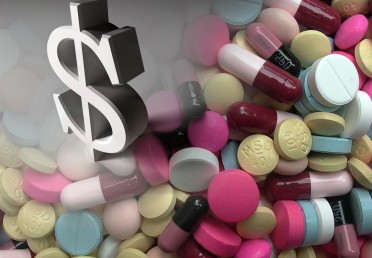Medication costs likely to jump this year
Prescription medication costs are expected to rise at least 11 percent, and possibly up to 13 percent, in 2016, according to a new report on national trends and projections in prescription drug expenditures.
The report, by a team of experts led by researchers at the University of Illinois at Chicago College of  Pharmacy, reviews recent cost changes and future factors likely to influence drug costs in the current year, using the IMS Health National Sales Perspectives (NSP) database.
Pharmacy, reviews recent cost changes and future factors likely to influence drug costs in the current year, using the IMS Health National Sales Perspectives (NSP) database.
Contributing to the overall increase, drug spending in clinics will increase 15 percent to 17 percent, while spending in nonfederal hospitals will grow 10 percent to 12 percent, said Glen Schumock, professor and head of pharmacy systems, outcomes and policy at UIC and lead author of the report.
“These estimates for growth are considerably higher than those we have made in the past but consistent with recent trends and other forecasts,” Schumock said. “We have observed consistent increases in growth over the past three years in hospital settings.”
In 2015, drug prices continued a steep climb that began in 2013 in both clinics and nonfederal hospitals. More than $419 billion was spent on prescription drugs last year, an 11.7 percent increase over the previous year. The increase resulted from higher prices for existing drugs (8.4 percent), spending on new drugs (2.7 percent) and changes in the volume of drugs used (0.5 percent), and was higher than anticipated, Schumock said.
“Individual drugs with the greatest increases in expenditures in 2015 were specialty agents and older generics,” he said. “These agents are likely to continue to influence total spending this year.”
The dual combination hepatitis C drug ledipasvir-sofosbuvir was the top drug, accounting for $14.3 billion in expenditures in 2015. It was followed by the rheumatoid arthritis drug adalimumab ($10.6 billion); insulin glargine for diabetes ($9.2 billion); and etanercept (for autoimmune diseases) and rosuvastatin (a statin used to treat high blood pressure to prevent cardiovascular disease), each at about $6.5 billion.
The increase in the number and use of high-priced specialty medications could cause costs to rise even higher this year, Schumock said. These pharmaceuticals will constitute a significant portion of new medications on the market in the future.
Forty-five new medications for complex, chronic or rare diseases such as metastatic breast cancer, plaque psoriasis, cystic fibrosis and pulmonary arterial hypertension were approved by the U.S. Food and Drug Administration in 2015, and more could be on the way, he said.
In the future, medication costs will also be influenced by an aging patient population, a growing U.S. economy, and greater patient access to healthcare from the Affordable Care Act, Schumock said.
One factor that could inhibit the rising cost of drugs is the introduction of “biosimilars” — biologic products that are nearly identical to an original product that is manufactured by a different company. “Drug spending will be reduced only when there are a sufficient number of these products on the market to create competition and drive down prices,” Schumock said.
The new report is published in the American Journal of Health-System Pharmacy. The forecast is “widely anticipated by hospital and health-system pharmacists each year who use it to help project drug spending and develop drug budgets in their own institutions,” Schumock said.
Co-authors include Edward Li of the University of New England; Katie Suda of UIC and the Edward Hines Jr. VA Hospital; Michelle Wiest of the University of Cincinnati; Jo Ann Stubbings of UIC; Linda Matusiak and Robert Hunkler of IMS Health in Plymouth Meeting, Pennsylvania; and Lee Vermeulen of the University of Wisconsin, Madison.
